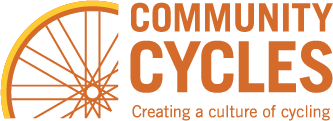Submitted by: Gary Sprung. Gary is a long-time environment and transportation activist. He currently serves on the Community Cycles Advocacy Committee and on the board of Colorado Rail Passengers Association. Before his 19-year Boulder phase, he was a Crested Butte City Council member and President of the High Country Citizens’ Alliance. Thanks to Gary, and feel free to submit your own cycling opinion. You could be featured next!
Boulder’s arterial streets were designed exclusively for cars with a goal of maximum throughput of vehicles. Safety did not come first. Two years ago, Boulder’s City Council instructed the transportation department to focus on making our arterials safer for all users, adding protected bike lanes and safety upgrades. This spring the department brought forth four alternatives for changes to Iris Ave. and all four include protected bike lanes. Thank you, City of Boulder!
I prefer option B. Here’s why…
Both A and B are safer than C and D. The center turning lane in A and B will take left-turning vehicles out of the flow of traffic. That will make Iris safer for drivers, eliminating lane-change-jockeying. Pedestrians crossing the street will need to cross only two car travel lanes instead of four. For routine emergencies, ambulances, fire trucks, and police will be able to use that center lane to get around cars stopped by their sirens.
“A” has protected bike lanes on both sides, which would be more convenient for cyclists. Option “B”, (a double bike lane on the north side) would be a little less convenient for cyclists making turns. But B is much better for disaster response. If wildfire invaded the city from the west, people might need all of Iris for eastbound evacuation. So how would fire trucks go westbound? Options B and D have the two-way bike lane, which is wide enough for emergency vehicles to travel against the eastbound flow of cars.
C and D would maintain four car lanes, but there is not enough width for four car lanes plus bike lanes. So the road would need to be widened, which would entail moving the curbs, new pavement, relocating sewers, cutting down a bunch of trees, and acquiring some private property. This would cost something like $30 million, compared to $5 million for A and B, and it would take 20 years. I don’t want to wait for 20 years for Iris to get safe.
A and B might slow traffic a bit, so driving from 28th to Broadway might take five minutes instead of four. Horrible! Some neighbors around Iris worry that will cause drivers to cut through neighborhood streets. That’s a reasonable concern, but the city is addressing this with traffic mitigation and calming measures on adjacent neighborhood streets..
Let’s put safety first.
Ray’s Soapbox welcomes submissions from Community Cycles members and supporters. Timely cycling-related topics of local interest are given first preference. Our guidelines: Maximum length is 350 words. No name-calling or ad hominem attacks. Keep it positive, please. All submissions are subject to editing. We reserve the right to not publish submissions. Photos or other graphics are encouraged. (soapbox photo credit: Peggy Price)
Submit your idea here. We’ll help you kick your text and photo into shape.

